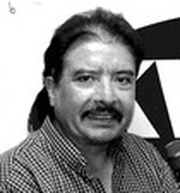|
This spring the film, “The Highwayman,” was released highlighting Frank Hamer’s exploits in the apprehension of super-outlaw couple Bonnie & Clyde, Kevin Costner portraying the 20th-century lawman. (Costner seems to have a penchant for playing men of the law: Wyatt Earp, Eliot Ness and Orleans Parish district attorney Jim Garrison.)
While the story is somewhat well-known and Hamer’s reputation familiar to many, what isn’t such common knowledge is that Hamer’s so-called luminous career in bringing justice to the people of Texas began in Del Rio. The famous Texas Ranger, who also escorted Governor Coke Stevenson to view the box 13 tally sheets at the Texas State Bank in Alice, Texas during the infamous “Box 13” election scandal involving Lyndon B. Johnson, has been lauded and ordained as a law enforcement deity, the film adding buckshot to his legend. The Hill Country born Hamer earned his badge with the Rangers in 1906. He was just 22 years old. Shortly thereafter, the seeds of a reputation were planted. Del Rio in 1906 was a town of approximately 2,000 people and the cradle of sheep ranching. During the fall of that year two local sheepmen, John Ralston and Blake Cauthorn (the Cauthorn name a familiar one in Del Rio) disappeared. The Rangers soon commenced an investigation and focused on a man named Ed Putnam who had sold a flock of sheep to Cauthorn for $4,500 (equivalent to $130,000 in 2019). The Ranger group who embarked to Del Rio included Hamer. According to author John Boessenecker, while searching for Putnam they received word that Cauthorn had been found shot dead in his buggy. Subsequently, they learned Ralston had vanished after completing a sheep deal with Putnam. Boessenecker wrote in True West magazine the citizens of Del Rio fell under a spell of tense animation and duly blamed Mexican bandits for the crimes. Val Verde County Sheriff John R. Robinson received a tip that Putnam was sequestered at a bordello in Del Rio. On Dec. 1, 1906, the Rangers and Sheriff Robinson along with his deputies converged on the house. Robinson and his men covered the front, the Rangers positioned in the rear of the house. Robinson ordered the women to exit the bordello and then informed Putnam that he knew he was inside. Putnam remained silent. Boessenecker wrote that as time went by a considerable mob had formed, some of them armed. Apparently, this lent a sense of urgency to the situation compelling Robinson to instruct his men to unleash a fury of rounds on the house. Meanwhile, in the back, Hamer stood his Winchester carbine down waiting for the opportune time to take his shot. Reportedly, Hamer observed a six-gun barrel protrude from behind a curtain and saw his chance firing his carbine and striking Putnam in the face ending his earthly existence. Hamer, the hero. Conversely, he was also involved in the racially-motivated Texas Ranger atrocities that occurred in South Texas. The Rangers intimidated, terrorized and even murdered several Hispanics during the World War I era. According to the Texas educational nonprofit, Refusing To Forget, “In early 1919, State Representative José Tomás Canales, the only Mexican-American legislator filed a bill intended to prevent a repeat of the Ranger actions of the previous years by dramatically restructuring the force.” Supporters of the Ranger force fiercely pushed back attempting to discredit Canales. Refusing To Forget stated Hamer stalked Canales in South Texas and Austin during the hearings. “Canales’ family feared that he would be assassinated.” Not sure if Hamer, “the deadliest Texas Ranger of the 20th-century,” qualifies as an anti-hero but it appears he operated above, inside and below the layers of justice and it’s certain that he left a historical footprint, dubiously or triumphantly, in Del Rio. |
�
KWMC
|



 RSS Feed
RSS Feed



